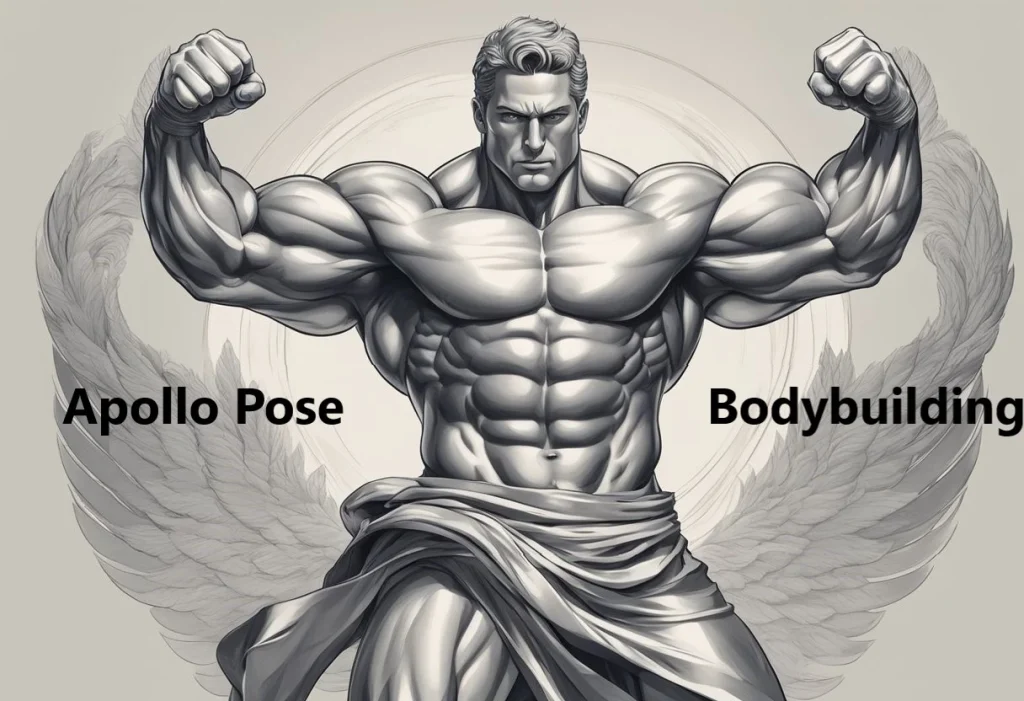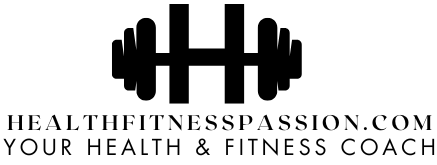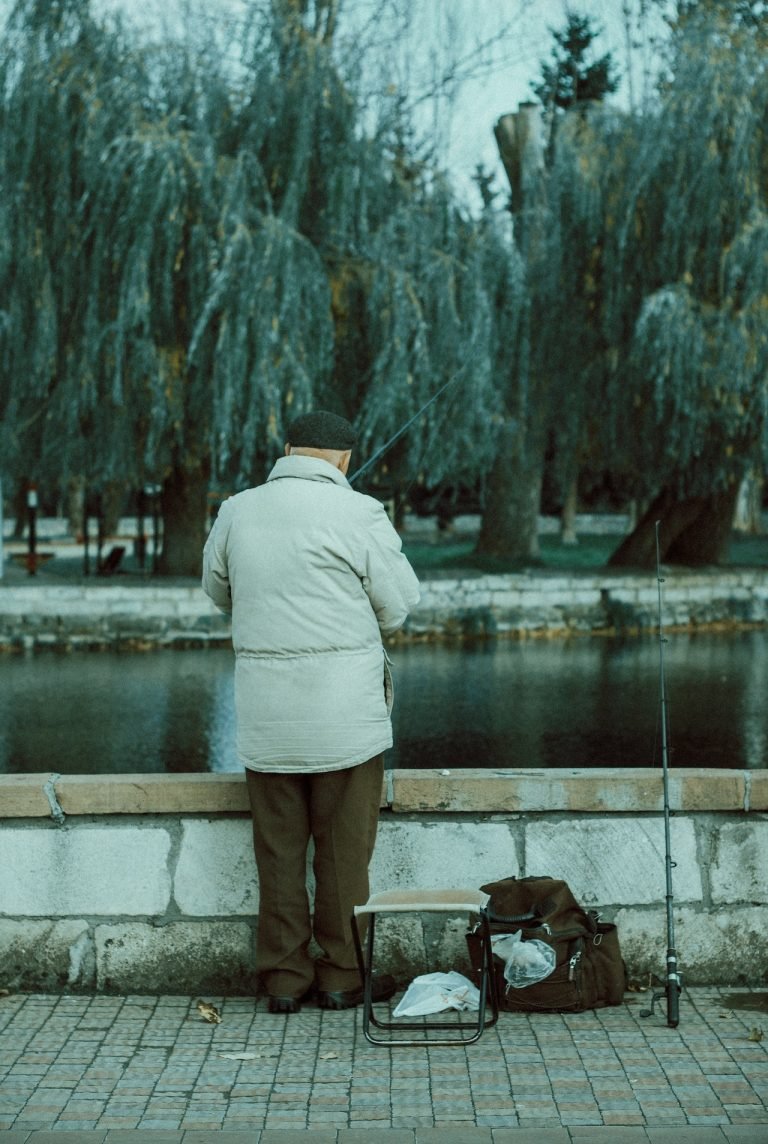Apollo Pose Bodybuilding: Mastering the Iconic Classic Pose in 4 Steps
The Apollo pose is a popular bodybuilding pose that showcases the athlete’s upper body muscularity, particularly the biceps and chest. It also highlights their overall physique symmetry and balance. Often used in classic bodybuilding posing routines, the Apollo pose allows competitors to display their hard-earned physiques in an aesthetically appealing way, helping them stand out on stage and potentially earning them higher scores from the judges.

To perform the Apollo pose, the athlete turns their legs at a 30-degree angle away from the audience while maintaining a strong and stable lower body stance. The upper body is twisted to face the audience, with the right bicep flexed and the left arm held straight in a complementary position. This configuration enhances the visual impact and highlights the muscular development of the bodybuilder.
Incorporating the Apollo pose into a posing routine demonstrates an athlete’s classic bodybuilding proficiency and pays homage to the sport’s golden era. Proper execution of this pose, along with other essential bodybuilding poses, may contribute to a winning presentation and further elevate a competitor’s standing in the eyes of the judges and bodybuilding enthusiasts alike.
How to Do the Apollo Pose
The Apollo Pose is a classic bodybuilding pose that draws inspiration from the Greek god Apollo, known for his strength, beauty, and athleticism. This pose focuses on displaying the muscular definition, balance, and aesthetics of the competitor’s physique. Although not as popular or well-known as some other bodybuilding poses, such as the front double biceps or the side chest, the Apollo Pose still has its place in showcasing the artistry and grace of the sport.
To perform the Apollo Pose, the competitor should first adopt a relaxed stance, with feet turned out at approximately 45-degree angles and arms hanging naturally at the sides. While keeping the core tight and chest lifted, the competitor then raises one hand overhead with fingers reaching towards the sky, mimicking a graceful and powerful pose reminiscent of Greek statues. It’s important that the muscles in the arm, shoulder, and chest are flexed, as well as the legs and hips, to truly showcase the strength and definition of the physique.
Some variations of the Apollo Pose also involve slight adjustments in the leg positioning, with one leg stepping out slightly to the side for a better sense of balance and a more visually striking display. The competitor should, however, remain cautious about overextending the leg or making sudden movements that could disrupt the elegance and fluidity of the pose.
When executed correctly, the Apollo Pose can highlight the following muscle groups:
- Shoulders
- Chest
- Arms
- Core
- Legs
This pose requires a combination of physical strength, control, and confidence in order to be performed effectively. As such, regular practice of this pose is essential for competitors looking to incorporate it into their repertoire. Additionally, since this is a more artistic and less mainstream pose, competitors should also take care to properly execute the other mandatory poses during competition to ensure they display their full range of skills and muscle development.
In conclusion, the Apollo Pose offers bodybuilders a unique opportunity to emphasize both their physical prowess and artistic expression. While not as widely recognized as other mandatory poses, it remains a valuable component of the overall bodybuilding experience and highlights the connection between the sport and the aesthetic ideals of ancient Greece.
The Schwarzenegger Influence
Arnold Schwarzenegger, a bodybuilding legend, significantly influenced the world of competitive bodybuilding, including the Apollo pose. Known for his exceptional posing skills and ability to captivate an audience, Schwarzenegger set the bar for his peers, even in poses like the Apollo.
The Apollo pose, which showcases the athlete’s symmetry, muscularity, aesthetics, and proportion, has been perfected and popularized by Schwarzenegger. His dedication to perfecting his stage presence earned him countless accolades and the admiration of fans and fellow athletes alike.
In addition to mastering the Apollo pose, Schwarzenegger also focused on other aspects of bodybuilding that continue to inspire generations of athletes. Let’s examine some of these contributions in brief:
- Magazine publications: Arnold regularly wrote for muscle-building magazines, providing valuable insights and guidance to aspiring bodybuilders.
- Books: He has released several books that detail his life as a bodybuilding champion and offer practical advice to those following in his footsteps.
- Film industry: Schwarzenegger made a successful transition into the entertainment industry, often promoting bodybuilding and fitness through his movies and other endeavors.
His colleague Tom Platz also revealed how commanding the applause was something Arnold taught him. This art of captivating the audience played a significant role in Schwarzenegger’s success, even when he was not in peak shape. The Apollo pose, along with other iconic poses, became synonymous with Arnold’s influence on bodybuilding.
Remembering Arnold’s impact, here is a list of some of the most notable highlights:
- 7-time Mr. Olympia champion
- Promoting bodybuilding in mainstream culture
- Contributions to the film industry as both an actor and producer
In conclusion, Arnold Schwarzenegger’s influence extends well beyond simply popularizing the Apollo pose. His dedication to the sport, his ability to engage with the audience, and his various contributions to the world of fitness make him a true icon in the realm of bodybuilding.
How to Apollo Pose-Executing it in the Right Way
Preparation
Before attempting the Apollo pose, it’s essential to warm up properly, as this bodybuilding pose involves several muscles and joints. Begin by stretching your upper body, focusing on your shoulders, biceps, chest, and back. A proper warm-up helps minimize the risk of injury and allows for better execution of the pose.
Execution
The Apollo pose showcases the athlete’s biceps, chest, and back muscles. Follow these steps to execute it properly:
- Starting position: Stand confidently on stage, with your feet shoulder-width apart, positioned at an angle of about 30 degrees from the audience. This angle helps display your physique effectively.
- Upper body positioning: Flex your right bicep and raise your right arm so that your hand is near your shoulder. At the same time, extend your left arm straight to the side, parallel to the ground, with your palm facing down. This arm positioning gives a symmetrical and aesthetic appearance.
- Chest and back display: Arch your back slightly and puff your chest out, drawing attention to your chest muscles and the wide “V” shape created by your back. Ensure that your shoulder blades are slightly squeezed together for a strong, confident posture.
- Final touches: Tense your abdominal muscles, and don’t forget to engage your legs, glutes, and calves to hold the pose stably. Smile and maintain eye contact with the judges or audience for a powerful presentation.
Remember, practice is key in executing the Apollo pose for bodybuilding. The more you practice, the more fluid and natural the pose will become, allowing you to showcase your physique in the best possible light.
Frequently Asked Questions
What are the key elements of the Apollo Pose?
The Apollo Pose is a bodybuilding pose that showcases a competitor’s upper body muscularity and overall symmetry. Key elements of the pose include standing upright with one leg slightly in front of the other, expanding the chest, and extending the arms out in a “V” shape with the palms facing up or forward. It is important to engage the core, maintain a confident facial expression, and exhale during the pose to emphasize the muscle definition.
How does the Apollo Pose differ from other classic bodybuilding poses?
The Apollo Pose is unique in its presentation, focusing on showcasing the overall aesthetics and symmetry of the upper body. Unlike other classic poses such as the front double biceps or lat spread, the Apollo Pose emphasizes grace and elegance rather than solely focusing on displaying specific muscle groups. Additionally, its upright stance and expansive arm positioning set it apart from more compact and aggressive poses.
What muscles are emphasized in the Apollo Pose?
While the Apollo Pose highlights overall upper body shape and symmetry, it does emphasize specific muscle groups as well. These include the chest, shoulders, arms, and traps. The core is also engaged to maintain stability and proper posture during the pose, subtly emphasizing the abdominal muscles.
How can you perfect the Apollo Pose for competitions?
To perfect the Apollo Pose, practice is crucial. Begin by practicing the pose in front of a mirror, working on the proper positioning and alignment of your body. Focus on engaging the right muscles, expanding your chest, and maintaining a strong core. Consult with a coach or experienced bodybuilder for feedback and guidance. Additionally, it’s important to develop a good stage presence and exude confidence when presenting this pose during a competition.
Are there any variations to the Apollo Pose?
Though the Apollo Pose is relatively consistent in its presentation, variations can be made depending on the competitor’s preferences and unique body composition. These modifications might include the angle and positioning of the arms or the choice of front leg. Experiment with different variations to find the version that best showcases your physique and personal style.
What are some tips to improve the overall look of the Apollo Pose?
To improve the overall look of the Apollo Pose, focus on:
- Proper breathing – exhale during the pose to emphasize muscle definition and create a more powerful appearance.
- Core engagement – maintain a strong and stable core to further highlight your abdominal muscles and improve overall posture.
- Body alignment – ensure your body is properly aligned, with your shoulders pulled back and down, arms extended gracefully, and leg positioning that accentuates balance and symmetry.
- Facial expression – a confident, focused face conveys self-assuredness and adds to the overall impact of the pose.
- Consistent practice – refining your Apollo Pose over time will improve your presentation and your ability to execute it effortlessly on stage.
Following these tips and practicing regularly will help enhance the overall look of the Apollo Pose and leave a lasting impression on judges and spectators alike.







